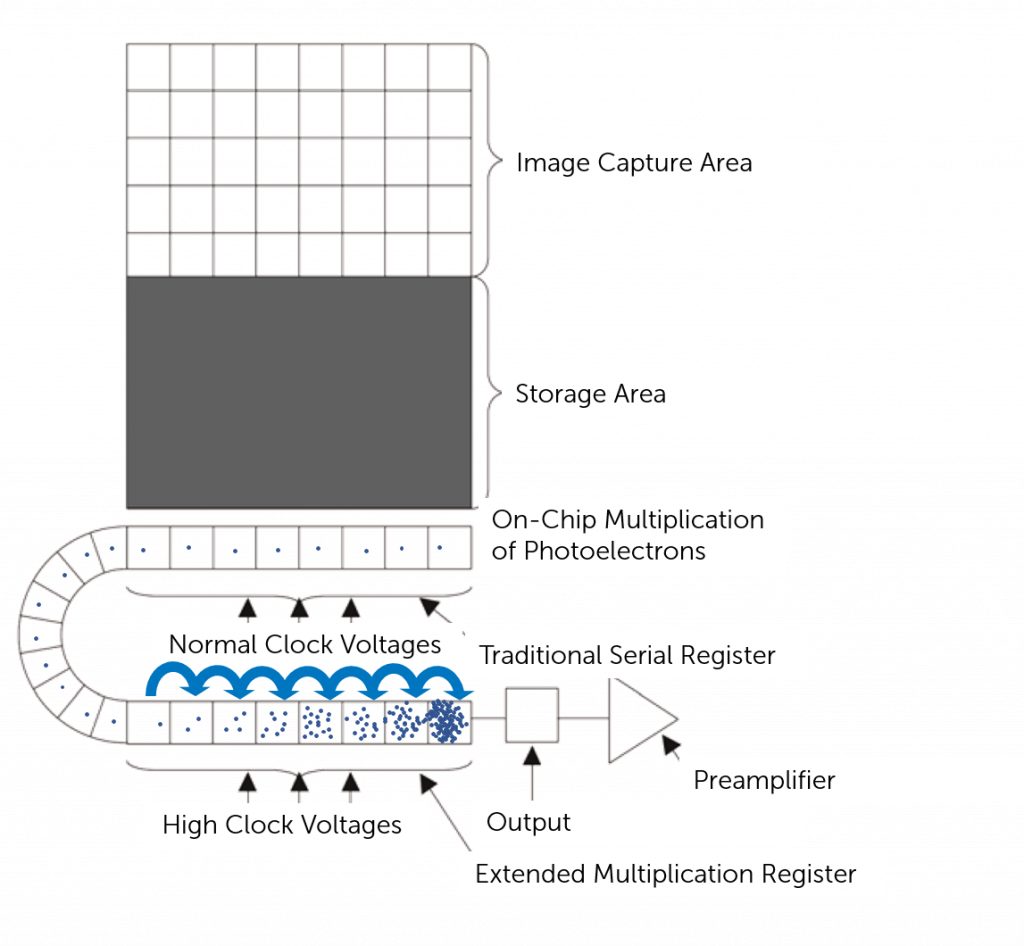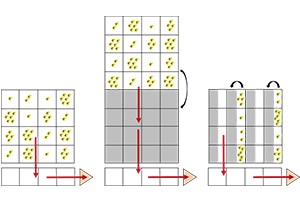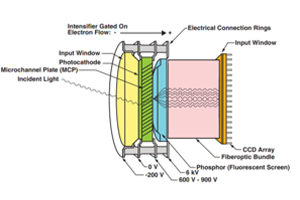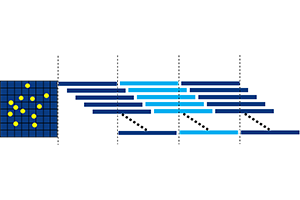EMCCD Sensors
Electron-multiplying CCDs (EMCCDs) are a variant of silicon-based CCDs that use electron multiplication to elevate electron signal greatly above the read noise floor to maximize sensitivity for low-light imaging. Photons are collected on EMCCD sensors in a similar way to CCD sensors, however, the addition of an EM-gain register allows photoelectrons to be amplified before being read out. This means that the signal is so high above the read noise, that read noise is effectively below one electron.
Due to this photoelectron amplification step, EMCCD cameras are able to achieve single-photon detection, with sub-electron read noise at high frame rates. EMCCD sensors are therefore used in a wide range of applications, from steady-state astronomical imaging to dynamic single-molecule tracing.
Signal Multiplying Process
EMCCD sensors utilize on-chip multiplication gain technology to increase the number of electrons generated from photons. This process occurs before the charge reaches the readout amplifier, so signal is increased before read noise is applied.
Photoelectrons are accelerated, via an increased voltage (up to 50 V), along an extended serial register called the multiplication register. Secondary photoelectrons are then generated via the impact-ionization process that is maintained by the applied voltages, as shown in Figure 1. The level of multiplication can be adjusted by altering the clock voltages, with an exponential relationship between the electron increase and voltage. Multiplying the signal above the read noise of the output amplifier enables ultra-low-light detection at high operation speeds, with an EM gain of >1000x.
For example:
- • 60 e– read noise with 10x EM-gain = 6 e– read noise
- • 60 e– read noise with 100x EM-gain = 0.6 e– read noise
- • 60 e– read noise with 1000x EM-gain = 0.06 e– read noise

On-chip multiplication gain is a function of the number of pixels on the multiplication register and the probability that an electron on that pixel will generate a secondary electron. This can be expressed by the relation:
G = (1+g)N
Where G is the multiplication gain, N is the number of pixels in the multiplication register and g is the probability of generating a secondary electron. This probability is dependent on the voltage levels and the CCD temperature, typically ranging between 0.01 – 0.016. Although this percentage is small, it can drastically change the generated output signal.
Comparison to CCD
EMCCDs have higher sensitivity than a CCD sensor during low-light-level imaging. This is due to the EM-gain register, which amplifies detected signal without increasing read noise. When imaging a sample with a low number of photons, CCDs require a slow scan to detect the signal. As EMCCDs have EM-gain, they do not require long exposures to detect any signal and are therefore able to readout at much faster rates, allowing signal to be detected up to 100x faster than with a CCD.
However, when imaging a sample that does not have low photon signal the CCD outperforms the EMCCD. CCDs have higher quantum efficiency and a lower overall noise factor (as there is no amplification step so no noise from the signal is amplified), so when the sample is not limited by low light CCDs are the better choice. By reducing the gain of an EMCCD, and reading out slowly, the sensor can mimic that of a CCD in brighter conditions.
Summary
EMCCDs use electron multiplication to enhance the electron signal above read noise. This makes EMCCDs ideal for low light imaging. Electron multiplication occurs via on-chip multiplication gain technology. This technology utilizes a secondary electron cascade in which an impact-ionization process is maintained by the applied voltages.
When conducting low light imaging, the EMCCD outperforms the CCD as it not only amplified detected signal above read noise but does not require long exposure times to detect signal so can readout at much faster speeds. However, if the photon signal is not low, the CCD outperforms the EMCCD due to a higher overall QE and lower overall noise factor.



